[THE CHALK-OUTLINE]
Shane (1953): Breakdown by The Hestinator (Brandon)

[THE GOOD, THE BAD, AND THEIR BADASSITUDE]
THE HEROES:
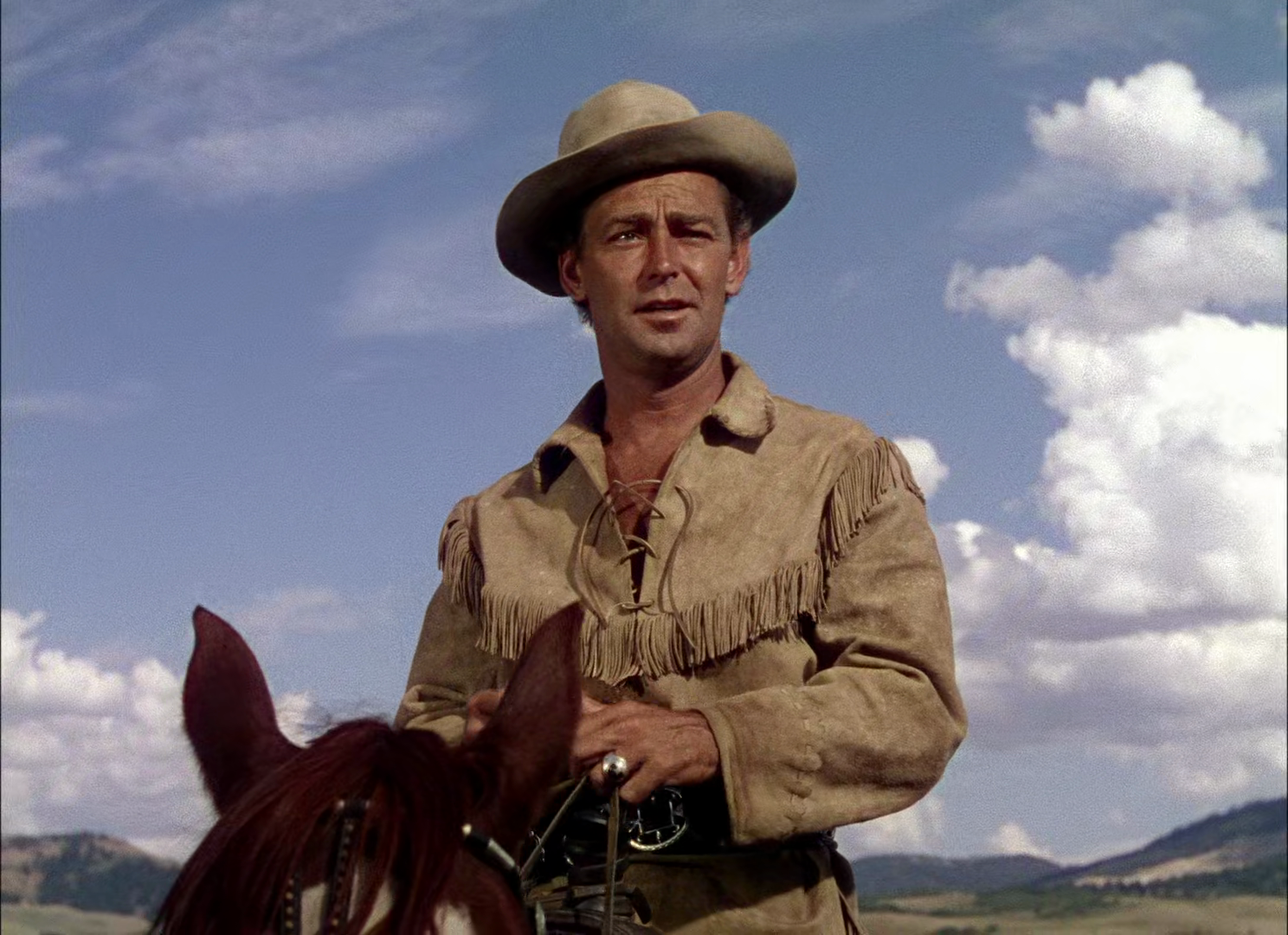
Alan Ladd as Shane
Our main man is Shane, the archetypal avenging angel gunman who fights for the rights of the downtrodden. I mean, this guy is a saintly white knight. I love it. When our story begins, Shane just wants to live the quiet life and quit gunfighting, but injustice just keeps coming around. This time, it’s a callous cattle baron who wants to drive the family he’s living with off of their property. Not on Shane’s watch. He’s the strong, silent type, but, as a barroom confrontation with Chris Calloway (Ben Johnson) reveals, he doesn’t want any trouble. His days of whooping ass are over…or are they?
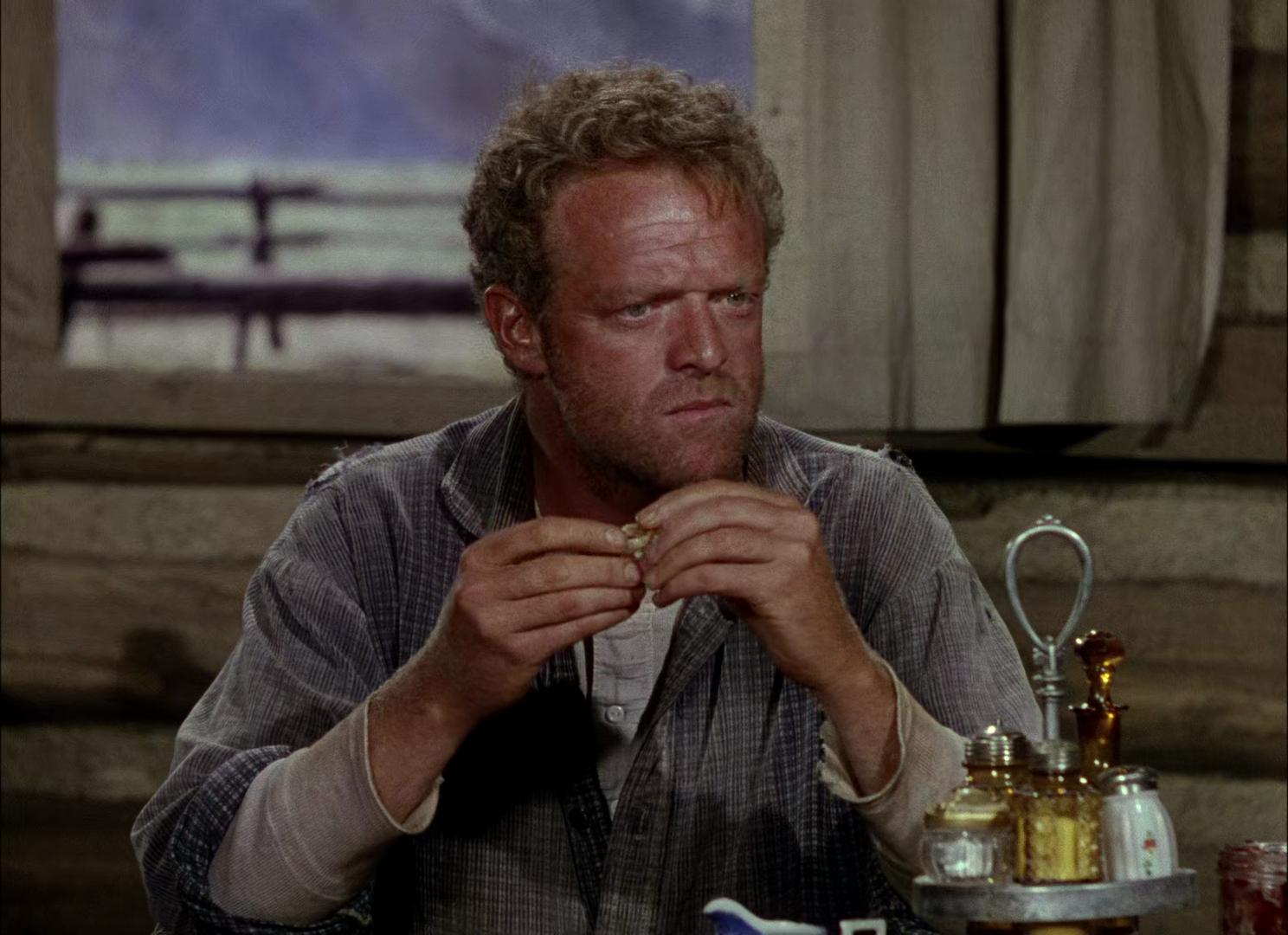
Van Heflin as Joe Starrett
Van Heflin’s Joe Starrett is a perfect representation of how the United States thinks of the typical father on the Wild West frontier. He’s kind, he’s tough, he’s resourceful, he’s protective of his family and their property. Joe is not a man of violence, but he’s prepared to do what a man’s gotta do. He doesn’t want to be a vigilante, but circumstances are pushing him too far.

Jean Arthur as Marian Starrett
She really wants to get into Shane’s buckskin. It’s kinda weird actually. Joe’s wife is supposed to be this paragon of frontier virtue, but she spends the entire runtime mentally disrobing the title character, who is most certainly not her husband. She likes to cook and cry.
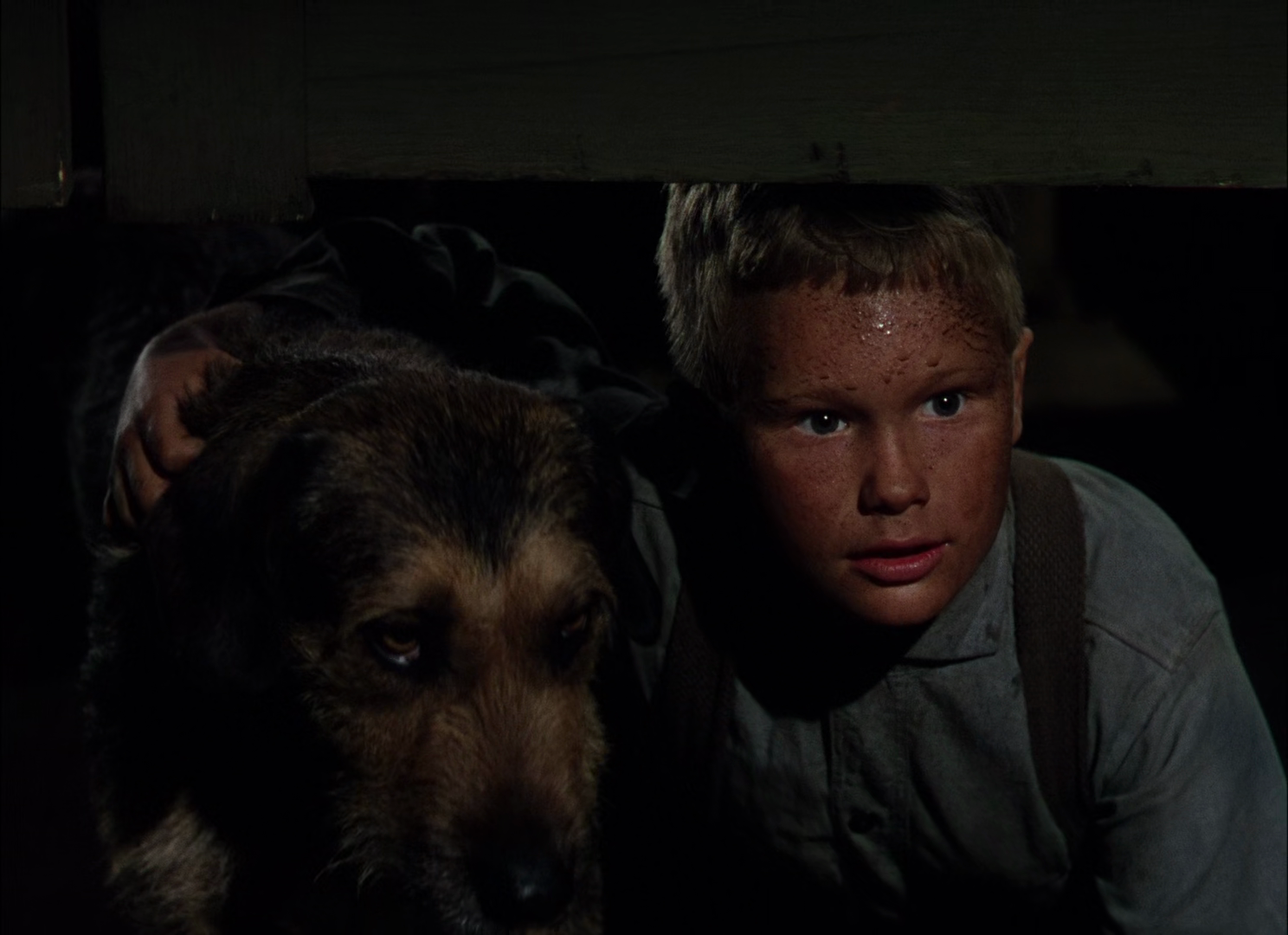
Brandon De Wilde as Joey Starrett
This tale wouldn’t be complete without the kid who idolizes the hero. It would be easy and hip to write off Joey as an “annoying” character, but I don’t think he actually is. Yes, he’s a child who doesn’t fully understand the world around him, but, as far as kid characters from 1950s movies go, he’s really not that bad at all. De Wilde was nominated for Best Supporting Actor at the Oscars (no! I’m not joking… look it up yourself!).
THE VILLAINS:

Emile Meyer as Rufus Ryker
Rufus Ryker is the head of a group of cattlemen who’re lusting after the Starretts’ land. He’s one bad dude for sure, but he’s not the type to go around shooting people in person. No, he doesn’t roll that way, instead hiring goons and gunslingers to do his dirty work for him. He may be the head honcho, but he’s not the most memorable baddie in Shane. That “honor” would go to…
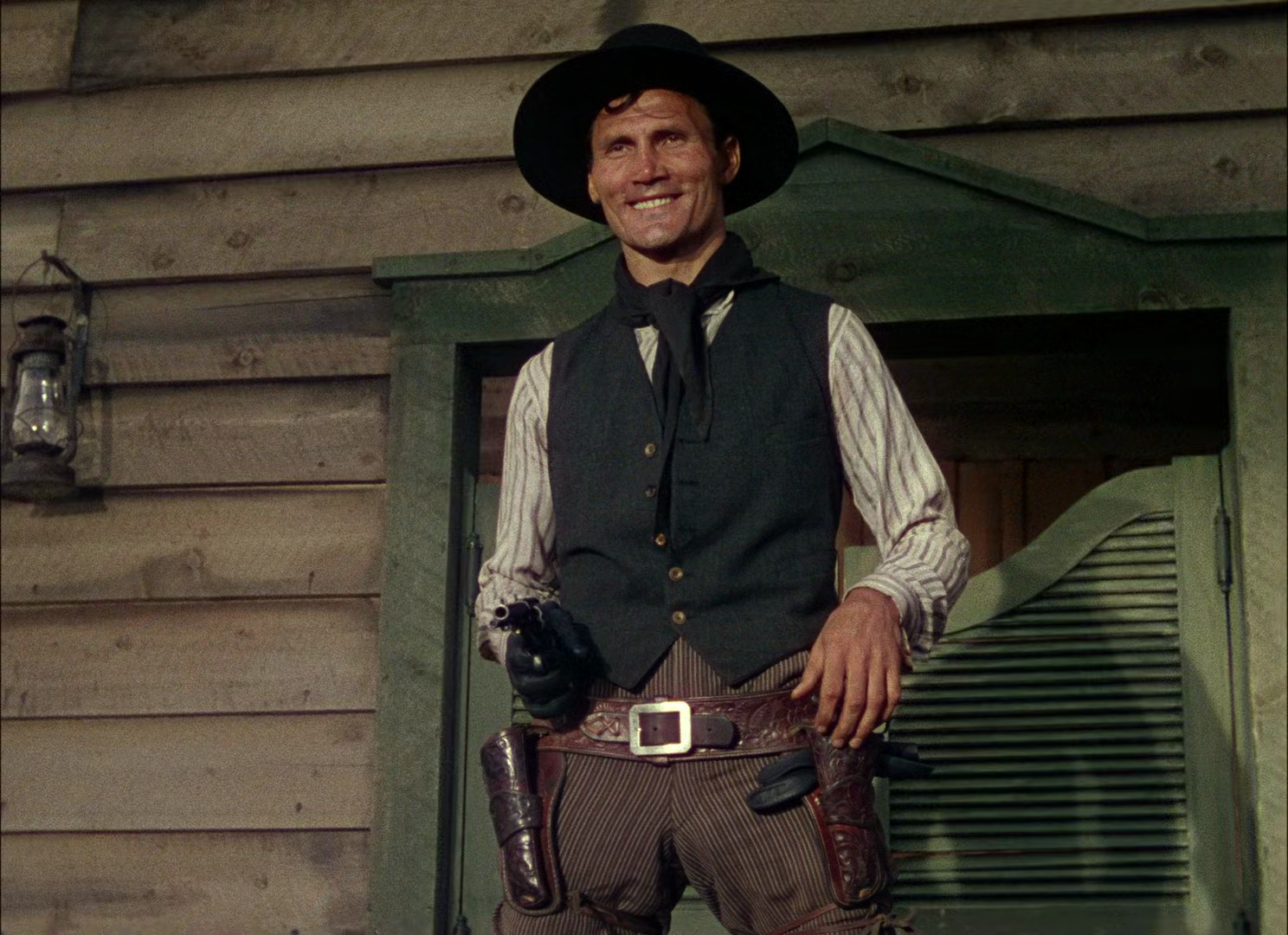
Jack Palance as Jack Wilson
Jack, played by Jack, is a gunman without conscience (sort of a dark reflection of the main character) who’s hired by Rufus Ryker to scare off the local homesteaders so he can steal their land. In all honesty, he doesn’t really do much, but he’s Jack Palance, so you know that he’s a volatile, mean son-of-a-bitch. Palance does a lot with a little, making his character one of the more memorable aspects of the picture. Hell, he even got nominated for Best Supporting Actor at the Academy Awards for his portrayal of a sociopathic killer here.
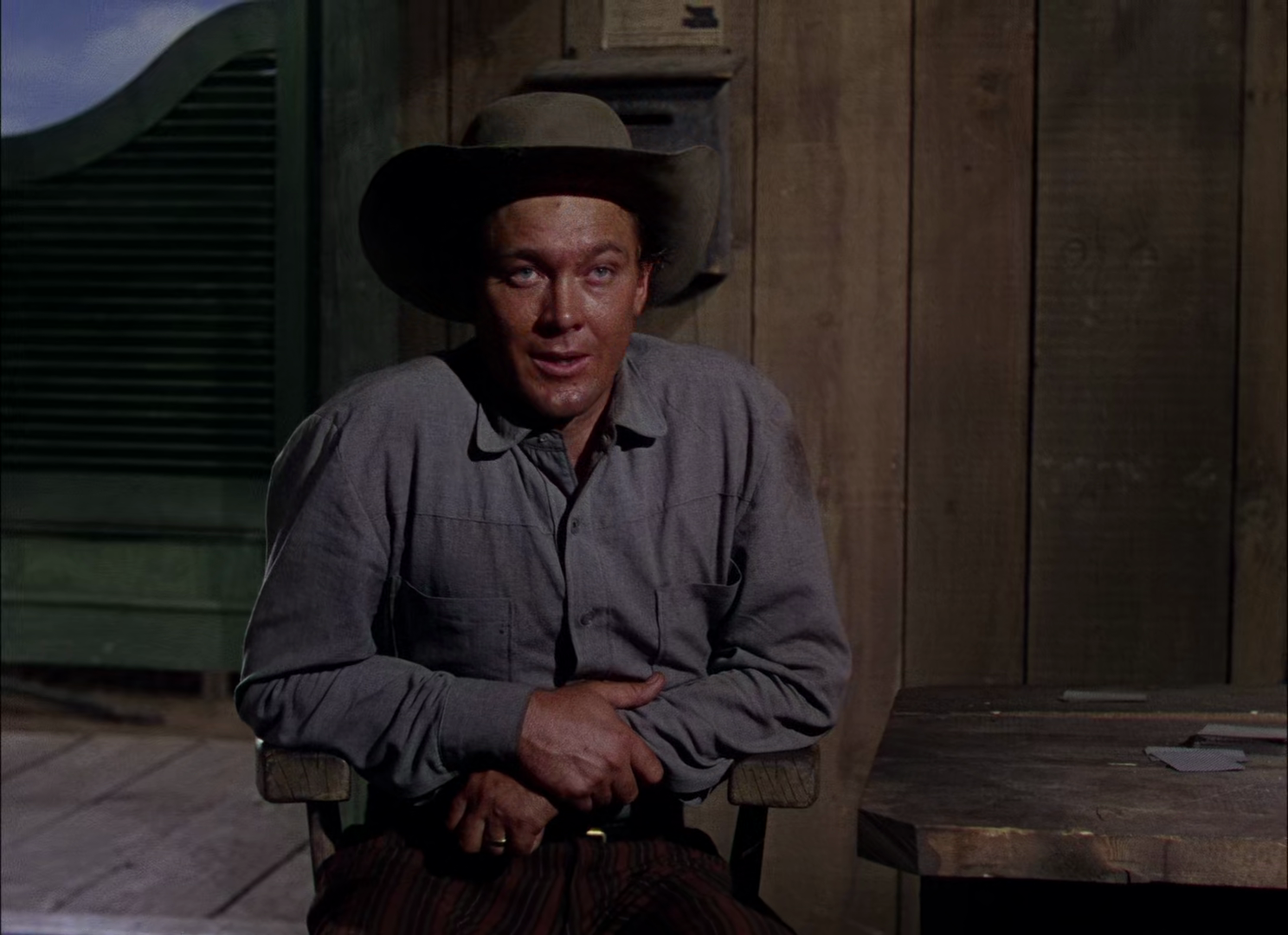
Ben Johnson as Chris Calloway
In an early role for Ben Johnson (though not his first… this man was in Mighty Joe Young [1949], and he rocked it), he plays one of Rufus Ryker’s pieces of hired muscle. Barroom brawling is what he does best and he’s not too fond of teetotalers. He doesn’t appear to be a pleasant personality at first glance, but there may be more to this character than what first meets the eye…
[THE SEX AND VIOLENCE]
DUDESWEAT AND MACHISMO:
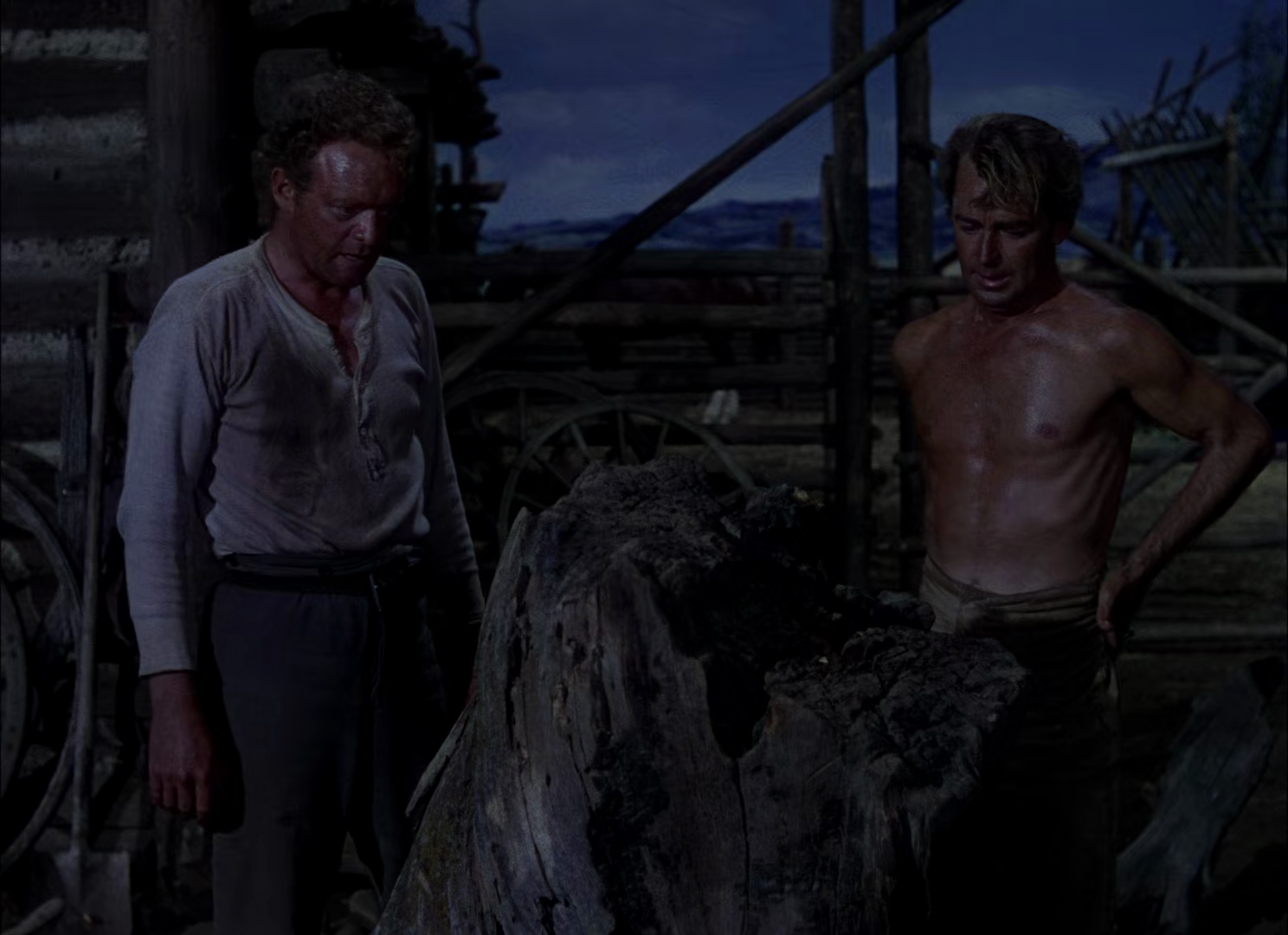
Alan Ladd takes off his shirt to help Van Heflin clear a tree stump (while majestic music plays in the playground, making you think that they were putting the finishing touches on the Panama Canal or something). Said tree stump becomes a sacred symbol of their – er – friendship. They keep the hunk of wood around, even bumping into it during a fist fight that they have.
EXPLOITATION AND MISOGYNY:

There’s not much of this sort of thing here. Sure, the wife character, Marian, doesn’t do much except cook and cry when the heroes are about to go into battle, but this is pretty routine for a 1950s western movie, so I can’t hold it against the film too much.
MURDER BY NUMBERS: [ 4 ]
The first person to die in Shane is Frank “Stonewall” Torrey (Elisha Cook Jr.), a homesteader who eats Jack Wilson’s (the Jack Palance character) lead. Eh, don’t feel too sorry for him, because he’s a proud neo-Confederate. Boo hoo. The next three fatalities are scumbags (including the slimy Palance) who get blown away by Alan Ladd during the final shootout. Alan Ladd isn’t in great condition after the grand finale, but it’s left ambiguous as to whether he dies of his wounds or not.

There’s not really any blood in this movie, but characters do end up pretty battered and bruised from in-you-face fist fights. Shane was apparently one of the first films to use wires to jerk actors backwards after they were “shot,” which is a nice touch. According to Wikipedia (never wrong), director Sam Peckinpah said “When Jack Palance shot Elisha Cook Jr. in Shane, things started to change.” The guns are sometimes as loud as shit here, thanks to the sound effect being a large-caliber firearm being blasted into a garbage can.
MOST SATISFYING ASS-KICKING AND/OR DEATH:

As far as the action in this movie goes, it’s hard to beat the barroom melee that starts as a one-on-one scrap between Alan Ladd and Ben Johnson. After beating the tar out of Johnson, Ladd finds himself facing down multiple thugs and – HOLY SHIT, IT’S VAN HEFLIN WITH AN AXE HANDLE!!! The bar gets trashed and the homesteaders win some much-needed respect. Even though there’s no explicit blood, it’s interesting to see how bruised and beat-up the participants look.
[THE BEST OF THE REST]
EPIC MOMENT:
Back in Buckskin
When we first see Shane, he’s riding the plains in a buckskin outfit that I guess symbolizes his old life as a gunfighter. After moving in with the Starretts, he gets some new duds and puts away his old costume – I mean, outfit. However, with the flick reaching its climax, ol’ Shane must break out the old apparel and stop family man Joe from confronting the Ryker bunch. After knocking Joe’s block off with a swift pistol-whipping, Shane sets off with to “town” to put an end to the Ryker menace once and for all.
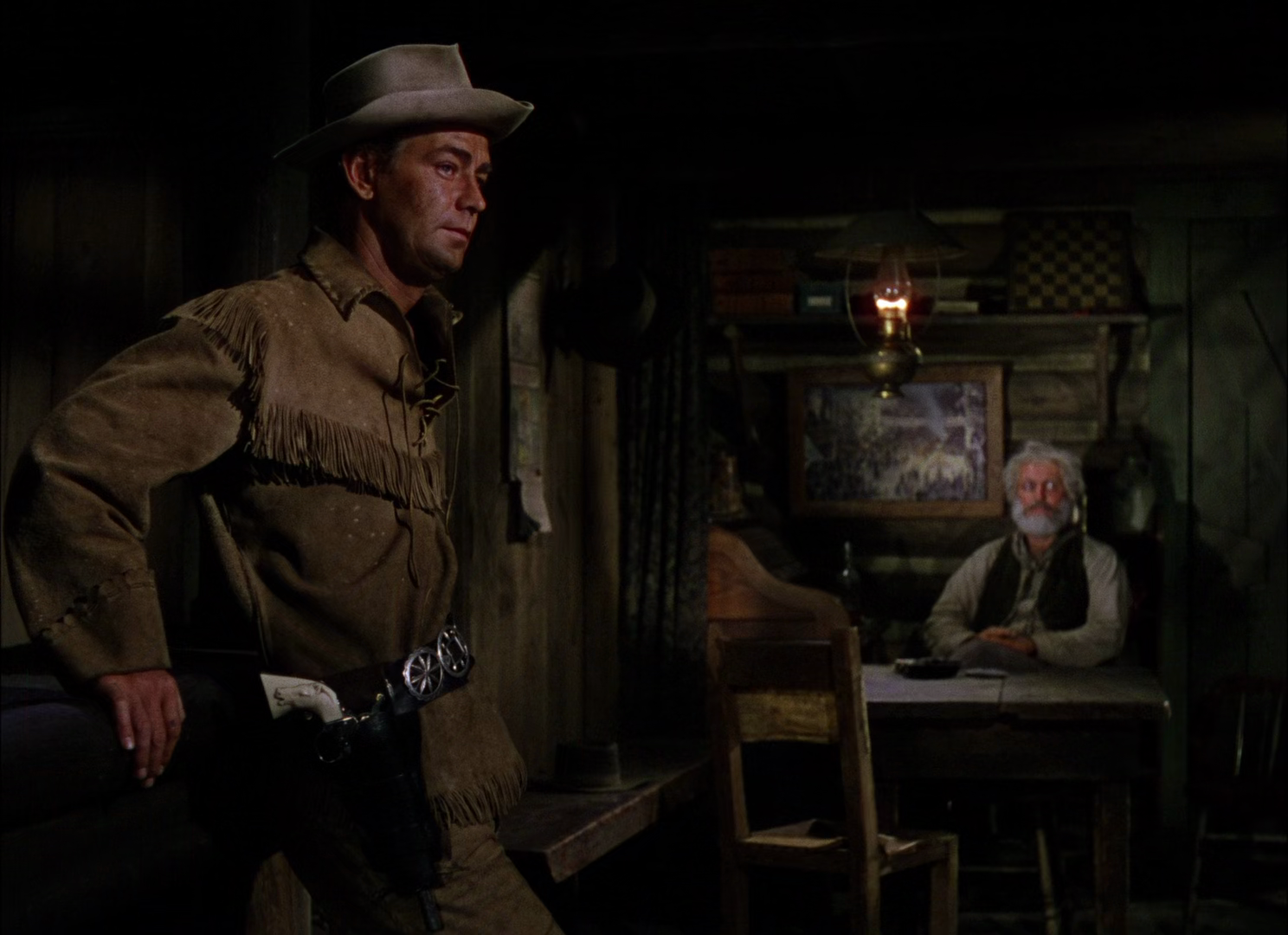
It’s the dead of night, and young Joey and his dog are secretly watching the showdown unfold. After a tense standoff, Shane starts popping people. Jack Wilson, Rufus Ryker, and Rufus’ brother Morgan (John Dierkes) all end up worm food. It’s all over in the blink of an eye, but justice has been served. However, Shane doesn’t manage to escape the fray completely unscathed…
BEST LINE:
It would be easy to choose the most iconic line of the movie for this category. As Shane leaves at the end, Joey cries out “Shane. Shane! Come back!” This is a touching moment that was named the forty-seventh greatest quote from an American-made movie as part of the American Film Institute’s AFI’s 100 Years… 100 Movie Quotes retrospective in 2005. However, we’re going to go with something a little manlier.
Right before riding off into the night, Shane briefly explains to Joey why he can’t stick around. Shane has sacrificed his purity from lethal violence to save the day.
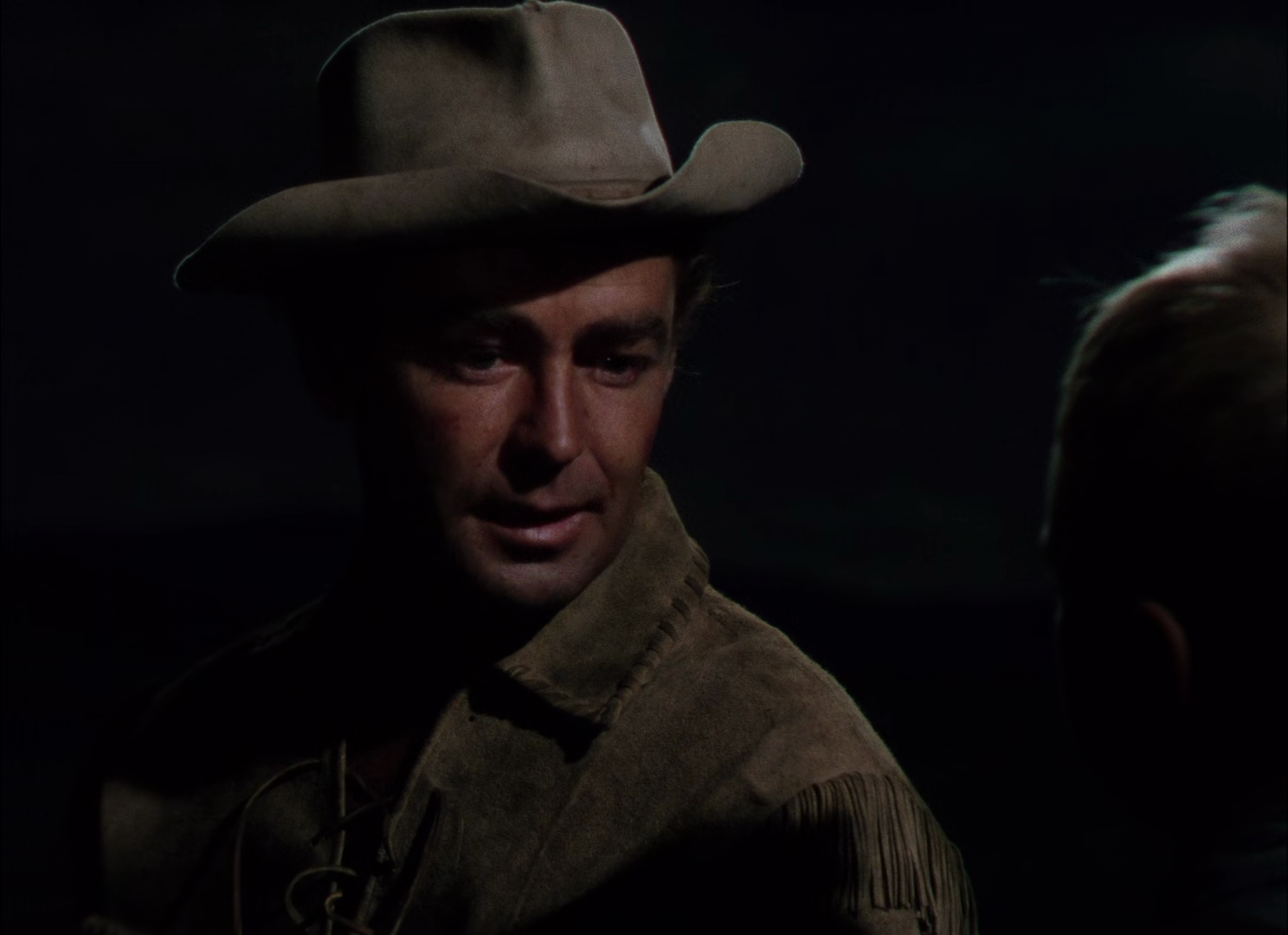
Shane (Alan Ladd): “Joey, there’s no living with… with a killing. There’s no going back from one. Right or wrong, it’s a brand. A brand sticks. There’s no going back. Now you run on home to your mother, and tell her… tell her everything’s all right. And there aren’t any more guns in the valley.”
Supposedly, Brandon De Wilde (who plays Joey) was making faces at Alan Ladd throughout his moving farewell monologue. It started pissing off Ladd, who went to De Wilde’s father and said “Make the kid stop or I’ll beat him over the head.” Yup, Alan Ladd threatened to beat up children.
[THE EXECUTION]
Shane is not just one of the very best western films of all time, it’s also one of the very best vigilante films of all time. There’s no law in the area that the story’s set in, so the heroes have to take it into their own hands to see justice. However, when it comes to the fatal stuff, only the guardian angel character (Shane, of course) who’s already tainted by past killings, can do the dirty deed. Joe Starrett cannot lose his purity by going into town to do away with the Ryker clan…that job must be done by a loner professional who is condemned to ride the plains by himself, fighting the good fight wherever it may be (sorta reminds me of The Magnificent Seven [1960] in a way). Shane is the outsider who can kill. It’s not quite Death Wish (1974), as Charles Bronson was “punching down” at poor muggers in that one, while our hero here is “punching up” at a presumably very wealthy cattle baron. Going into a bar and shooting a bunch of people may be illegal according to Earthly law, but Shane is acting in accordance with a higher law. It provides interesting food-for-thought when thinking about morality.
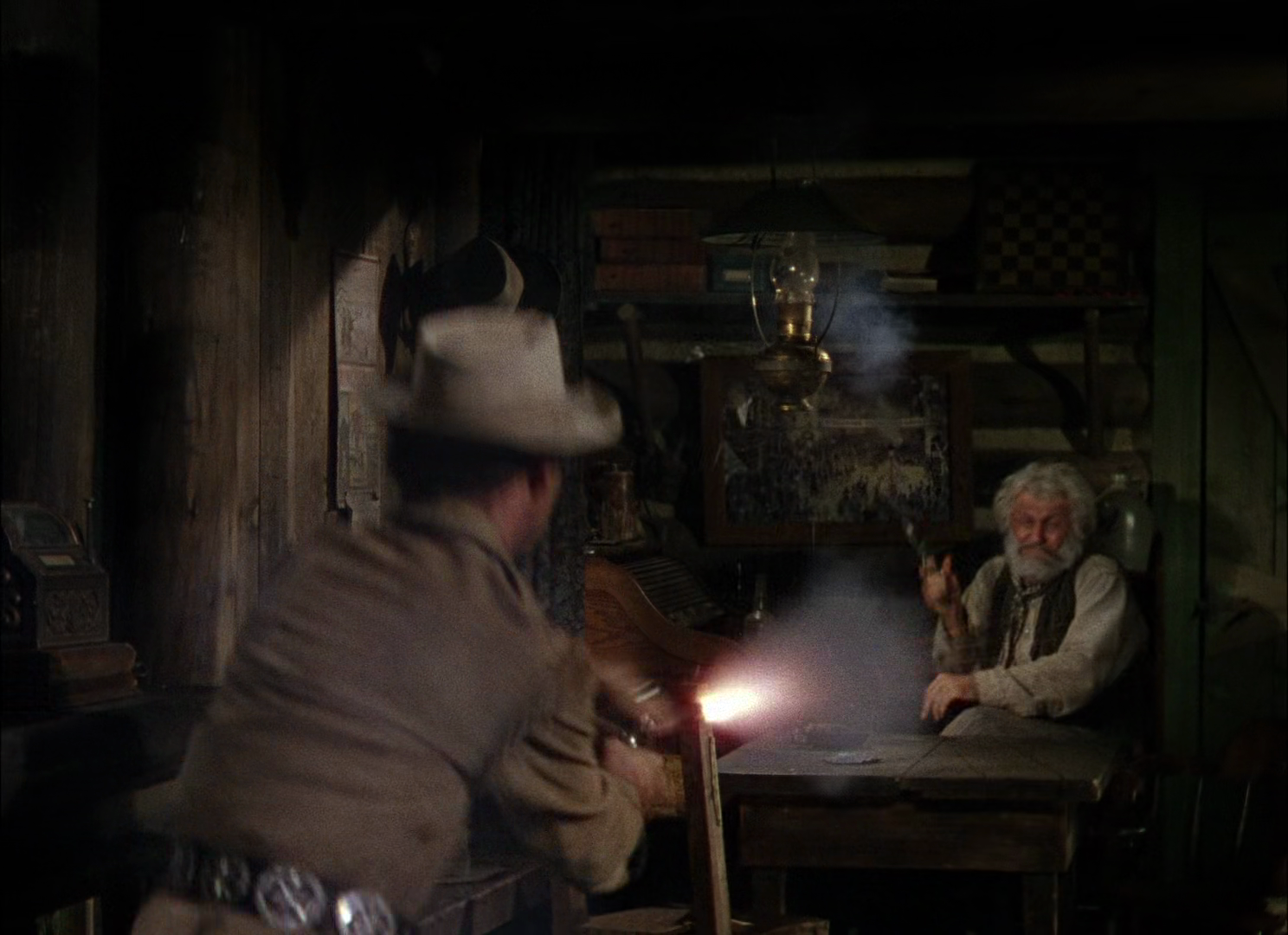
This motion picture is pretty wonderful, thanks to elements like its beautiful scenery, talented cast, and wholesome nature. This feels like a western that one could watch with almost the whole family. Remove some of the death scenes and some of the make-up from “injured” actors during/after the fight sequences, and it would come close to being a Disney production or something. That’s not necessarily a bad thing, even if its portrayal of the Wild West is a highly romanticized one.
One of the best parts of Shane is its musical score, which was composed by Victor Young. He’s not a name that gets thrown around too much when the greatest film score composers of all time are discussed, but his work here really elevates the product. This is a loud-and-proud, old-timey score, so, if you prefer your movie music subtle, you may be in for a bad time. However, I love it when “choreographed noise” is boisterous and wearing its heart on its sleeve.

Shane isn’t really an action movie (just action-adjacent), but it does have some exciting physicality for fans of those types of films. It’s hard to decide what this piece of cinema does better: shootouts or fist fights. The hand-to-hand brawls are certainly longer, getting more opportunities to show off neat choreography. That being said, it’s hard to get the moments of gunplay, especially the finale, out of your head. Firearms-related moments are shorter, but thanks to the sound effects and the wire-work (both mentioned earlier), they still feel high-impact.
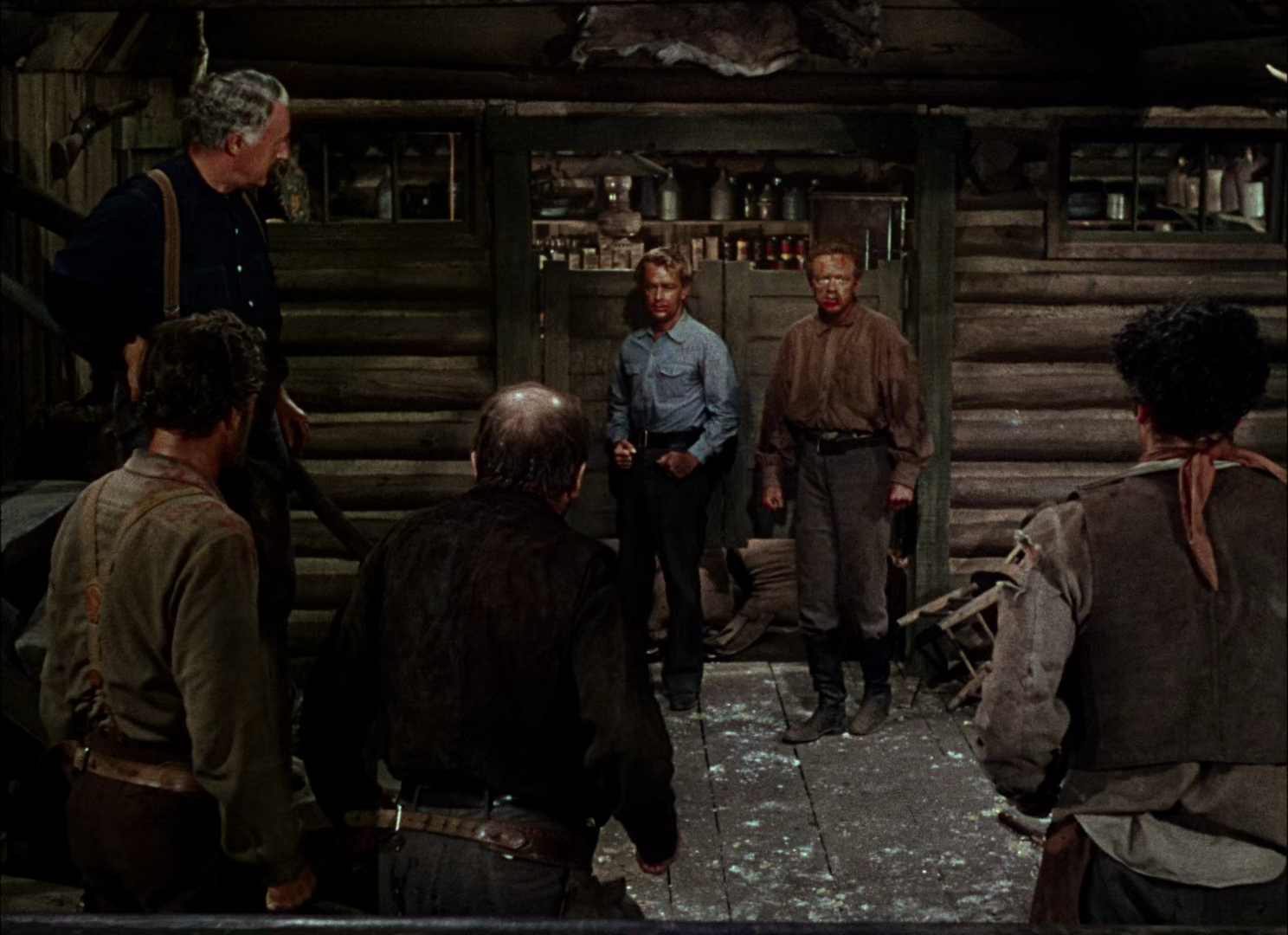
This is one of those western classics that feels truly heroic. It could be considered to be cut from the same cloth as, say, the aforementioned The Magnificent Seven or High Noon (1952). Did thoughtful, selfless gunmen like Shane actually exist in the Old West? I’m going to say “no” for now, but this doesn’t hurt the 1953 movie at all. While this flick never drags, there are a few slightly slower moments (resulting in me giving it eight-outta-ten). At the end of the day, though, it’s the courage, inner goodness, and violent benevolence of the title character that sticks with you. Shane is an excellent, timeless western that needs to be watched.
[THE MORAL OF THE STORY]
Vigilantism is only okay if you’re a professional at it.
[THE AOBG ACTION CHECKLIST]
[ ] Athlete(s) Turned “Actor”
[ ] Clinging To The Outside Of A Moving Vehicle
[ ] Crotch Attack
[ ] Dialogue Telling Us How Bad-Ass The Main Character(s) Is/Are
[ ] Ending Featuring An Ambulance, A Blanket, Or A Towel
[ ] Factory/Warehouse/Castle
[ ] Giant Explosions
[ ] Heavy Artillery
[X] Improvised Weapon(s)
[X] Macho Mode(s) Of Transportation
[ ] Main Character Sports Facial Accessory(s)
[ ] Manly Embrace(s)
[ ] Notorious Stunt-Man Sighting
[ ] Passage(s) Of Time Via Montage
[ ] Politically Fueled Plot Point(s)
[X] Senseless Destruction Of Property
[X] Shoot-Out(s) and/or Sword Fight(s)
[ ] Slow-Motion Finishing Move(s)/Death(s)
[ ] Stupid Authoritative Figures
[ ] Substance Usage and/or Abuse
[ ] Torture Sequence(s)
[X] Unnecessary Sequel*
[] Vehicle Chase(s)
[X] Vigilante Justice
*A spin-off television series of the same title aired in 1966.
[TOTAL: 6 outta 25]

